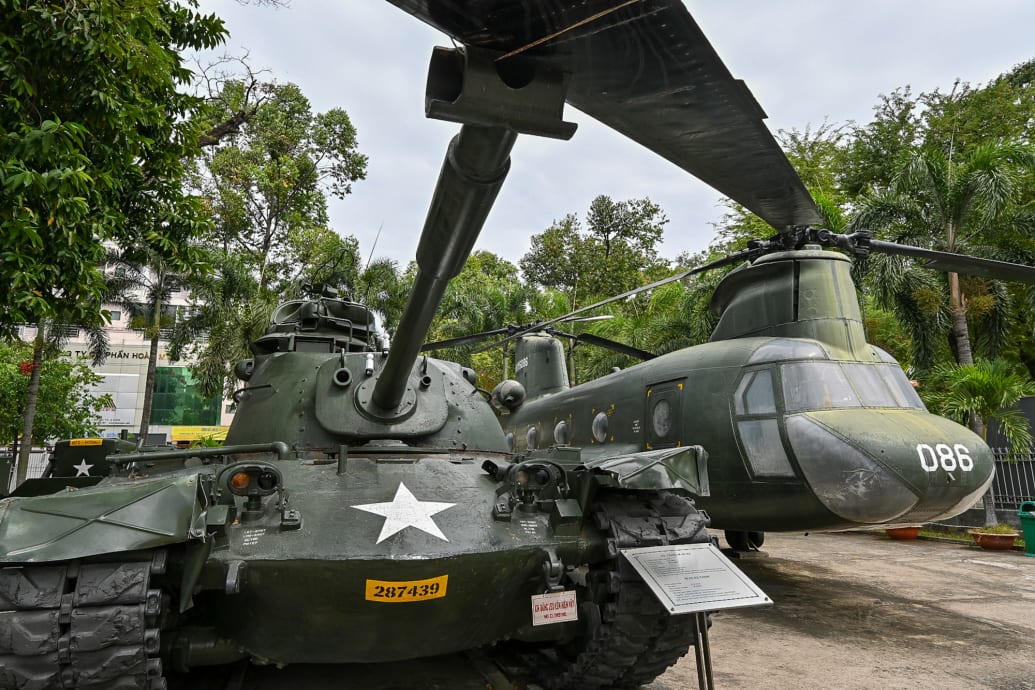Motorbike speedometers never seem to work in Vietnam. You can only guess at how fast you’re driving over the occasionally smooth but typically uneven pavement, and the time required to travel from here to there is always dubious.
In Vietnam, time itself sometimes feels unreliable. Depending on where you happen to be, it might be the high point of the war in 1968, or the end of it in 1975. Certain streets of Hanoi have the feeling of the old French colonial days, whereas in Ho Chi Minh City you often feel the immediacy of the present as the country struggles to modernize. Sometimes you even find yourself in the uncertain future, for Vietnam is very much a country attempting to march forward and away from its troubled past. But the past is everywhere.
I’m thinking these thoughts as I bounce along the old highway between Da Nang and Sơn Mỹ, the latter better known by Americans as Mỹ Lai, where American soldiers once committed an infamously savage massacre. But we’ll return to that emotionally charged place in a moment. For now, let’s start your itinerary where your journey through Vietnam’s war-torn past will likely begin.
Ho Chi Minh City—still referred to by many nostalgic locals by its pre-conquered name: Saigon—is Vietnam’s largest city and home to its most well-connected airport. Before the war the city was the nation’s capital, and during the conflict it became the primary staging location for U.S. and South Vietnamese forces. But after the fall of Saigon in 1975, it was stripped of both its capital status and name.
War Remnants Museum in Ho Chi Minh City, Vietnam.
Nick Hilden
Here and in the surrounding region you’ll find a number of key sites associated with the war, but I’m going to recommend two in the heart of the city as essential. Start at the War Remnants Museum, where you’ll find an expansive array of war material left behind after the American withdrawal in 1973—exactly 50 years ago—as well as a fairly comprehensive introduction to the conflict and many of its more horrible historical points: the key battles, the generational mutations wrought by the use of Agent Orange and other toxins, the war crimes (with a blatant bias against the Americans, who undeniably committed innumerable acts of barbarity, though the North Vietnamese forces certainly were not innocent of brutality).
Just down the street you should also explore the Reunification Palace, once the principal political base of operations where the South Vietnamese president hosted the likes of Nixon and Kissinger, and which was famously the site of the symbolic end of the war when North Vietnamese tanks came crashing through its gates in 1975. Today it’s filled with selfie-snapping tourists.
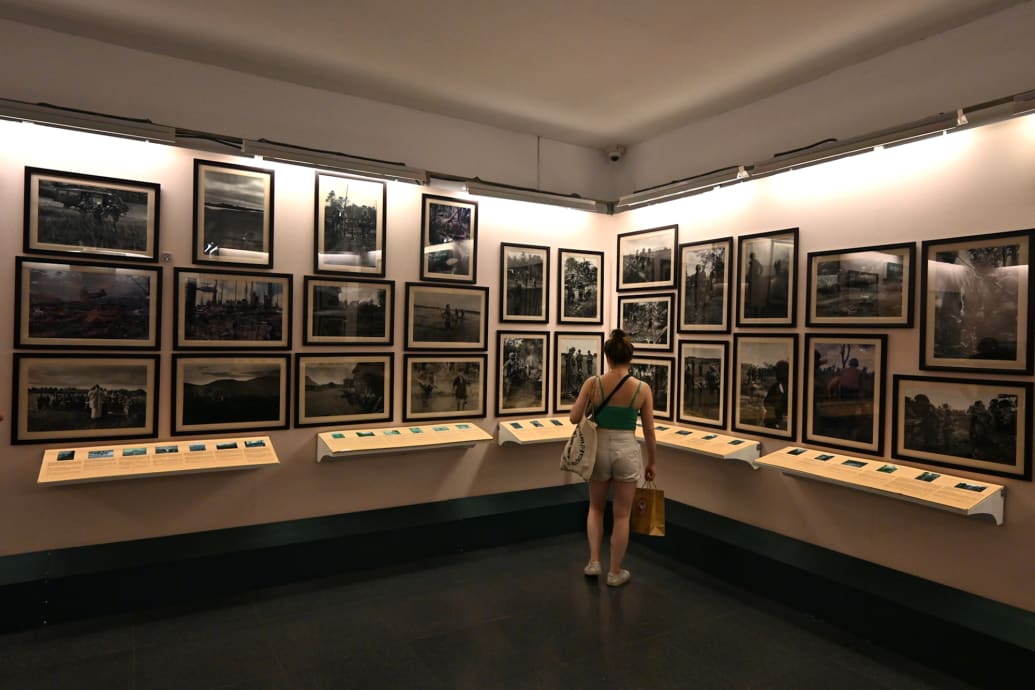
War Remnants Museum in Ho Chi Minh City, Vietnam
Nick Hilden
From here we’ll assume that you’re flying north to Hanoi, once the “enemy” capital (at least from an American point of view), now a charming city where traditional Vietnamese aesthetics blend with architectural elements leftover from French colonization, all of which is interspersed with—somewhat ironically as it is the central seat of the country’s communist leadership—popular American brands like Burger King, Domino’s, and KFC.
In terms of war-related sites, the city itself is something of a monument having withstood a more or less relentless bombing campaign. These days foreigners tend to stay in the Tây Hồ district north of West Lake (Hồ Tây), which happens to be where future senator John McCain crashed and was taken prisoner during a bombing run. He and many other American POWs were held in Hỏa Lò Prison—the infamous “Hanoi Hilton”—which today is among the city’s most popular tourist attractions.

Reunification Palace in Ho Chi Minh City, Vietnam.
Nick Hilden
In Hanoi you’ll also find the Vietnam National Fine Arts Museum, which offers an interesting collection of pre-war, war, and post-war/contemporary artworks. And a must-see is the Ho Chi Minh Mausoleum, where interred is the body of the controversial long-time leader of the country’s anti-colonial, revolutionary, and military efforts.
Da Nang is the perfect jumping-off point
Next up, no tour through the history of the Vietnam War would be complete without a visit to Da Nang—a busy city along the coast that was once home to the U.S. operating base. Here you’ll find My Khe Beach—known during the war by American GIs as China Beach—where the U.S. mustered its forces and provided R&R to soldiers after stints in the jungle. When the Americans left, it was from this beach that over 200,000 refugees attempted to flee by all manner of seacraft before the arrival of NVA forces. Today the beach is a popular tourist destination, with massive seafood restaurants and lively bars lining its boardwalks.
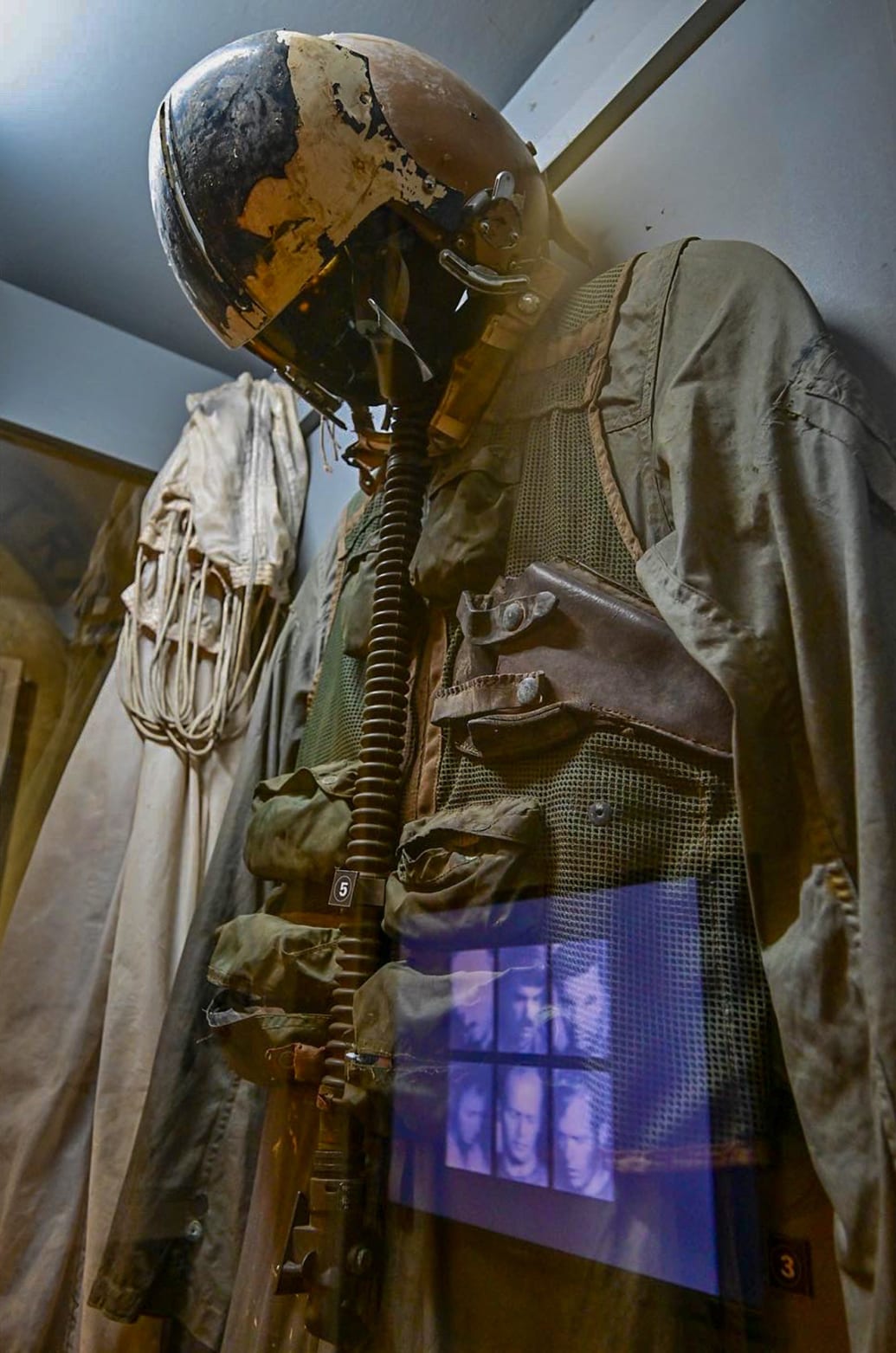
Hỏa Lò Prison.
Nick Hilden
Da Nang is the perfect jumping-off point from which to experience a variety of other key sites associated with the war. From here it’s a roughly three-hour motorbike ride to Huế (assuming you take the gorgeous if somewhat dangerous winding coastal road over Hải Vân Pass—dangerous but less so than the truck-laden main highway), a city that saw some of the war’s heaviest fighting during the Tet Offensive, and where you can today visit the stunning ruins of the 200-year-old Imperial City. Just south of Da Nang stand the Marble Mountains, in which was concealed an underground Viet Cong hospital that was supposedly within earshot of the U.S. Marble Mountain Air Facility.
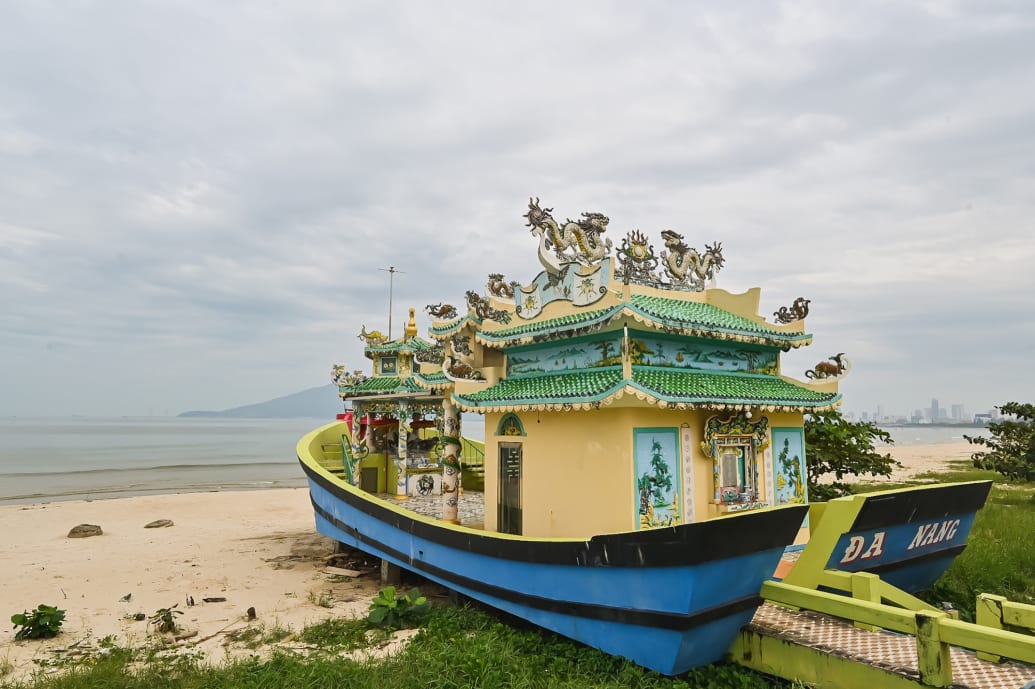
Nick Hilden
Also near Da Nang—about a three-hour drive by motorbike—is Sơn Mỹ, location of the Mỹ Lai Massacre.
New roads are being built between Da Nang and Sơn Mỹ. They’re much smoother than the highways they’re replacing, and along the way you pass new resorts and condominiums, though cattle and stray dogs still meander along the shoulders.
“We preserve places like this so that we will never forget how horrible war is and the importance of peace.”
During my visit to Sơn Mỹ, the new highway was still not completed, and at some point I was forced to detour through a small village along a route comprised of cement blocks that did not fit together quite right, forcing me to slow down as I bounced my way over its surface. It happened to be Tet—the Vietnamese version of the Lunar New Year during which virtually everything is closed—so there was no one on the road, which was lined with flags of vibrant pink, lime, yellow, and crimson. All of the red flags bore either the golden star of Vietnam or the hammer and sickle.
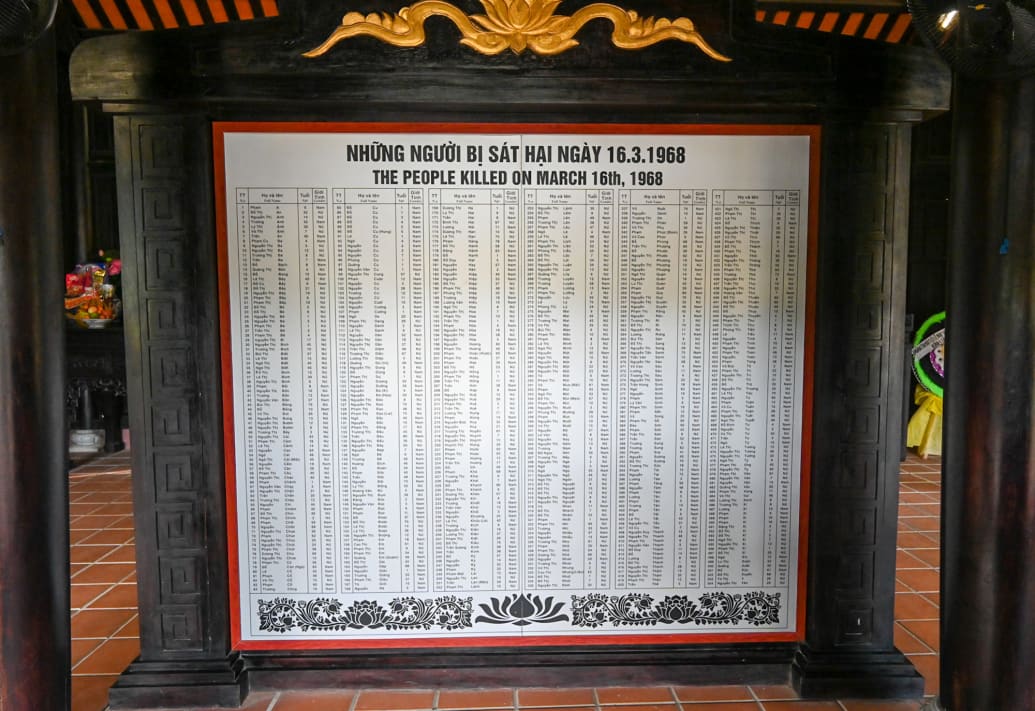
Sơn Mỹ memorial.
Nick Hilden
Eventually this route carried me into Sơn Mỹ, which was unusually bustling considering that it was Tet. Compared to some of the other villages I’d passed along the way, it is a visibly prosperous town where many of the houses are modern and well-maintained, and well-dressed children zip around on electric bicycles and scooters. Much has changed since the fateful day of March 16, 1968.
It took a little while to find the monument to the massacre as it is mislabeled on Google Maps. Directions to the Sơn Mỹ Memorial took me to a school that was closed for the holiday, where a woman came out and used hand gestures to direct me up the street to the Sơn Mỹ Vestige Site, where I parked and paid the 10,000 dong (about 40 cents) entrance fee.

Sơn Mỹ memorial.
Nick Hilden
The park is a peaceful if haunting place, and regardless of its haunted atmosphere it was difficult to believe that I stood where some 500 people had been tortured and murdered en masse. At the center of the grounds is a monument of stone portraying a small group of villagers, a sad woman standing at their center with a fist raised high while the other arm cradles a dead infant. Another woman holds the body of a dead man, her expression twisted in a scowl of hate. A man collapsed to the ground clutches still another corpse. Behind this is a temple dedicated to the 504 victims. Inside it is a list of their names and their ages. There are too many single digits listed. Too many 1-year-olds. Any was too many.
Then scattered around the grounds are a number of additional memorials and relics from the massacre. The foundations of several homes that were destroyed. A homage to the 170 people who were executed in a long trench. Marble tombstones placed atop a pair of mass graves. And the bodhi tree once tended to by one of the murdered, which grows amid the ruins to this day.
The place was bereft of visitors. It was just me and my partner, a Vietnamese family, and a handful of Chinese tourists. Perhaps it had something to do with the holiday and the pandemic, but it did not strike me as a place where Americans came often, and indeed the woman at the ticket counter seemed surprised when she asked and I told her where I was from.
If Americans don’t go, they should. It is admittedly somewhat difficult to reach by typical tourist standards, but new roads are under construction. Access is getting easier all the time. And it is important—nay, essential—that more people, more Americans, understand the sorrow of war.
One final suggestion. If during your visit you make it to the northern islands of Hạ Long Bay (and you should, for they are fantastically beautiful—the very definition of paradise with their island spires topped by lush jungle and centuries-old pagodas hidden in coves that can be reached only by kayak), check out the Hospital Cave tunneled into one of the hills of Cat Ba Island. Carved out by the North Vietnamese, it famously withstood tremendous bombing by the Americans.
I will never forget the words of my very grim tour guide—a Vietnamese man whose parents had suffered greatly during the conflict—and who seemed exhausted by the very weight of its history:
“We preserve places like this so that we will never forget how horrible war is and the importance of peace. We must work together to maintain peace. I hope you agree with me.”



